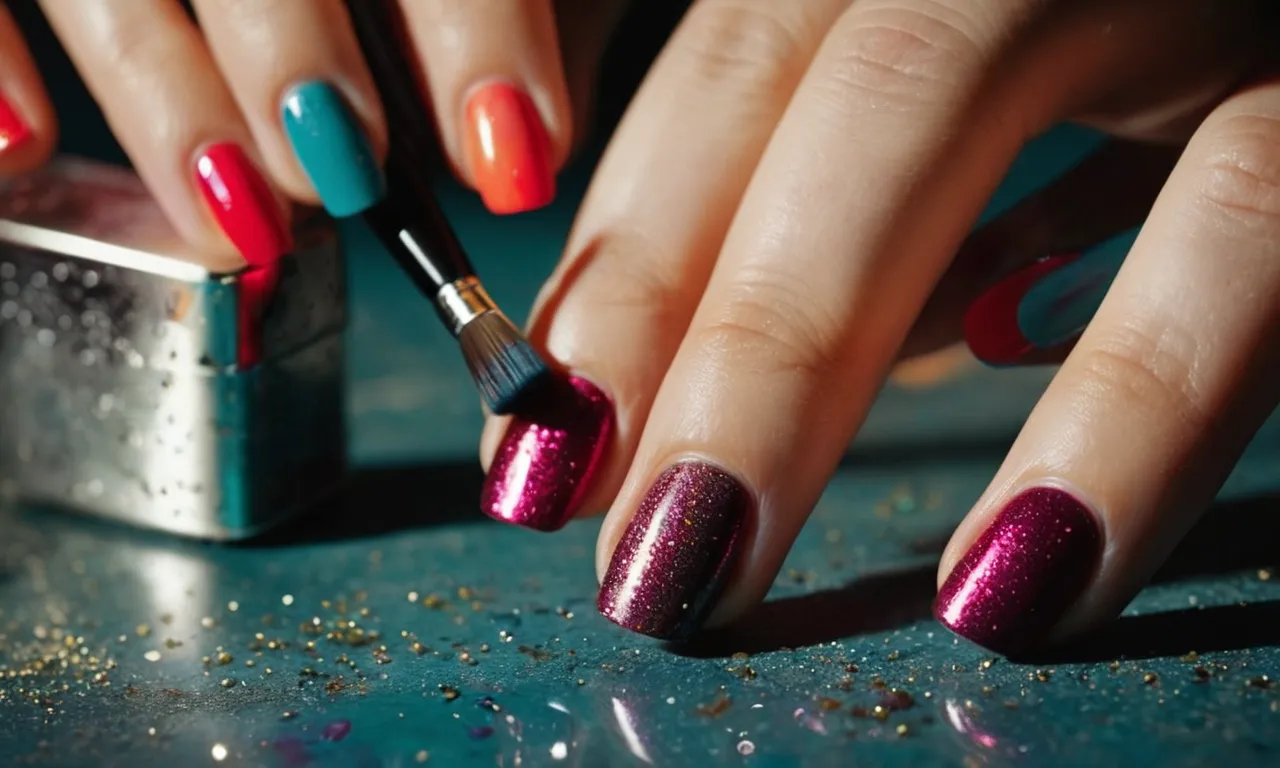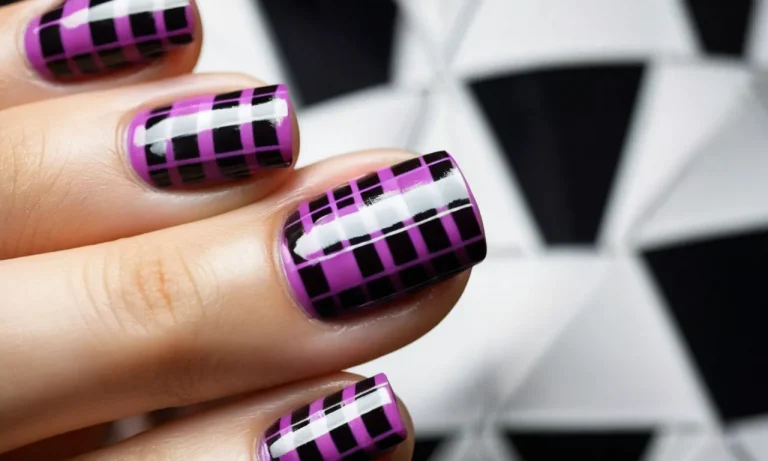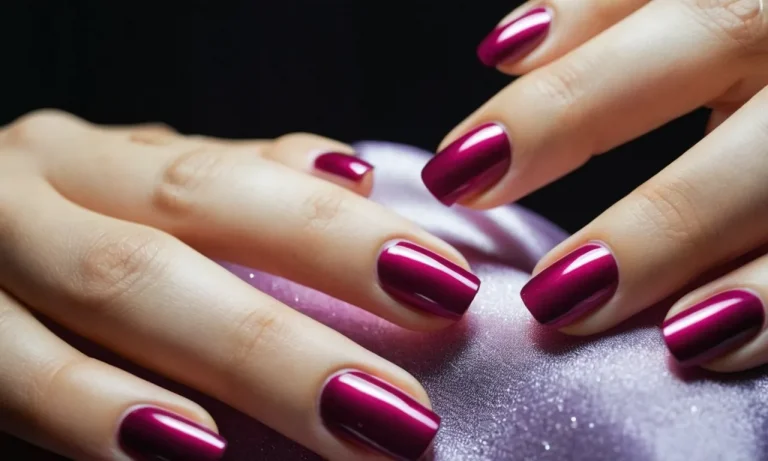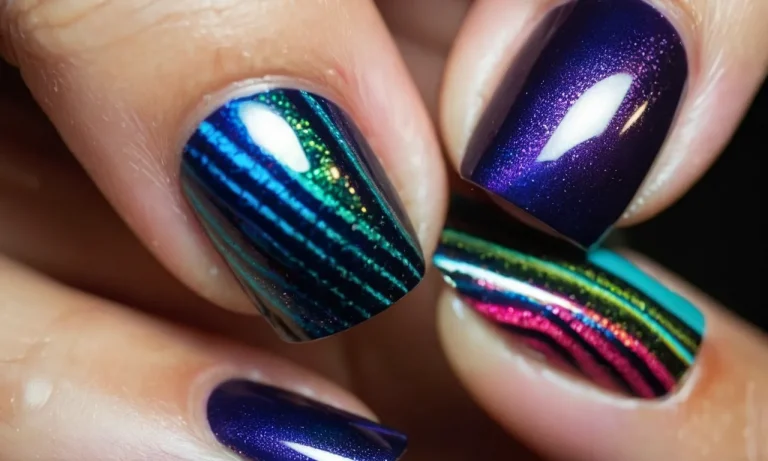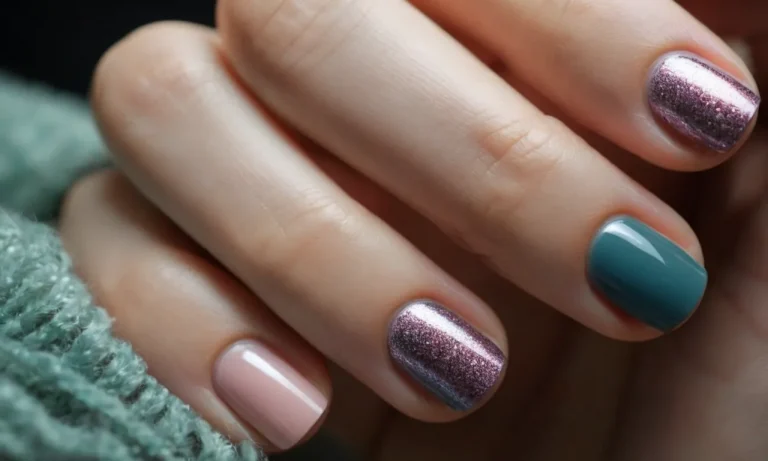How To Get Spray Paint Off Nails: A Comprehensive Guide
Have you ever accidentally gotten spray paint on your nails? While spraying a project or doing some home DIY, it can be easy to end up with paint specks and splatters across your manicured nails. If you need to remove spray paint from your nails quickly, acetone nail polish remover will do the trick.
But what about if the paint has already dried and hardened onto your nails? Don’t worry – with some patience and the right techniques, you can get your nails looking clean and polished again.
If you’re short on time, here’s a quick answer to your question: soak a cotton ball with acetone-based nail polish remover and hold it against the painted nail for 30 seconds before gently scrubbing. The acetone will break down the paint so you can wipe it away.
Assessing the Paint on Your Nails
Identify the Type of Paint
The first step is to identify what type of spray paint is on your nails. Nail polish, acrylic paints, and spray paints all have different chemical compositions, so knowing the specifics will help determine the best removal method.
Check the bottle of the spray paint to see if it lists the ingredients or chemical composition. Common paint types include:
- Acrylic paint – Water-based and composed of acrylic polymer emulsion. Tends to peel off nails over time.
- Enamel paint – Oil-based with a glossy finish. Difficult to remove from nails.
- Lacquer paint – Contains nitrocellulose that evaporates quickly and hardens on the nail.
If you don’t have the original bottle, inspect the painted nails closely. Acrylic paint will have a matte finish and enamel will be noticeably glossy. Lacquer is tricky to identify visually. You can also consider when and how the paint got on the nails – if you used spray paint for an art project, it likely has a lacquer base.
Consider How Long the Paint Has Been on Your Nails
Fresh wet spray paint will be easier to remove than dried, hardened paint. If the paint is over 24 hours old, it will require more effort to take off. The longer spray paint remains on nails, the deeper it sinks in and sticks to the nail plate surface.
As a benchmark, salons recommend starting the removal process within 14 days for the highest chance of success and to prevent damage. If it has been longer than a month, prepare for the process to take longer with a risk of your nails becoming thin and brittle in the process.
Determine If Your Nails Are Damaged
Before attempting to remove spray paint, carefully inspect each fingernail. Look for any existing cracks, chips, or other signs of damage on the nail plates. You’ll also want to take notes on the condition of your cuticles, checking for any redness, swelling or tearing.
If you discover pre-existing nail issues or damaged cuticles, take extra care during the removal process. Damaged nails are more vulnerable when scrubbing and picking at spray paint. For severely cracked or torn nails, visit a nail salon and have a technician handle the paint removal to prevent trauma.
Trying Gentle Cleaning Methods First
Use Nail Polish Remover With Acetone
The first gentle method to attempt is using a nail polish remover containing acetone (about 5-15% concentration). Acetone works as a solvent that can break down the spray paint. Dip a cotton ball in the remover and rub it carefully over the painted nails.
Check often and stop immediately if skin becomes irritated. This method alone may not fully remove stubborn spray paint, but helps weaken the paint bonds before trying other techniques.
Try Non-Acetone Nail Polish Remover
For sensitive skin or nails, using a nail polish remover without acetone is another option. These gentler formulas rely more on rubbing alcohol (isopropyl alcohol) to dissolve paint. Doing a patch test first on a small area of skin is still wise.
Gently rub on nails with a cotton pad or soft cloth, allowing time for the remover to soak in and lift the paint.
Scrub Gently With a Soft Brush
After applying nail polish remover, scrubbing very gently over nails with a soft-bristle nail brush or toothbrush can aid the removal process. Take care not to brush too hard or abrasively over delicate nail beds. Dip the brush in more remover as needed.
The scrubbing action helps lift stained spray paint residue the acetone or alcohol has loosened.
Soak Nails in Warm Soapy Water
As a final gentler technique before moving to stronger solvents, make a finger bath by filling a small bowl with warm water and a small squirt of dish soap (look for moisturizing formulas like Aveeno).
Allow nails to soak for 10-15 minutes so the minor surfactants in the soap can penetrate and surround any remaining paint specks. Rinse clean afterward, and repeat if necessary before trying other methods.
Using Intensive Techniques for Stubborn Paint
Try and Oil Soak
When regular nail polish remover fails, it’s time to bring in the big guns. An oil soak can help break down stubborn layers of dried spray paint. The experts at Leaf TV recommend soaking nails in pure olive oil for 10-15 minutes to soften the paint bonds.
Massage the oil into nails and cuticles to boost effectiveness. According to nail care specialists, oil soaks are gentler than harsh acetone products.
Use Small Amounts of Acetone
While excessive acetone can damage nails, using tiny amounts directly on stubborn spray paint flecks comes recommended. Hello Glow suggests dabbing a cotton swab into acetone before gently working on individual bits of paint. Take great care not to touch skin or allow acetone to flood entire nails.
Going slowly preserves healthy nails underneath.
Gently File off Top Layers of Your Nails
In dire situations, lightly filing stained nails can eliminate spray paint particles. This intensive removal method comes with risks, according to The Healthy nail company. Over-filing wears down vital layers that protect growing nails underneath.
Take precautions like soaking nails first and using a delicate emery board. File gently only on surface stains instead of digging into nail beds. Massage cuticles after to stimulate regeneration.
Repair Damaged Nails After Paint Removal
No matter the removal method, nails often show signs of stress after scrubbing off spray paint. Now is the time for some TLC. The pros at Sally Beauty suggest massaging coconut oil daily to hydrate and protect nails and cuticles.
For added repair power, apply a strengthening base coat underneath polishes moving forward. Look for formulas with keratin or green tea extract to nourish nails from within. With gentle handling, nails can bounce back better than ever.
Preventing Spray Paint on Your Nails in the Future
Wear Gloves When Spray Painting
The best way to prevent getting spray paint on your nails is to wear protective gloves while spray painting. Opt for nitrile gloves that are thicker and more durable than latex gloves. Make sure to get gloves that fit snugly so they don’t slip off.
Tuck the gloves under any long sleeves so overspray doesn’t sneak its way into the gloves.
Put Petroleum Jelly Around Your Nails
Before spray painting, apply petroleum jelly to the skin around your nails using either a cotton swab or clean fingers. The petroleum jelly acts as a protective barrier to prevent paint from sticking to the skin and cuticles. Reapply more petroleum jelly if needed between spray painting tasks.
Just be careful not to get any on the spray paint surface you are working on.
Consider Press-On Nails for Painting Projects
If you’ll be working on an extensive spray painting project, consider protecting your natural nails by wearing press-on nails instead. Look for press-on nails made of plastic, gel, or polygel. Make sure they fit securely so they don’t pop off when using your hands.
When the project is complete, simply remove the press-on nails and your natural nails will be paint-free.
By taking preventative measures like wearing gloves, applying petroleum jelly as a barrier, and using press-on nail covers, you can work on spray painting projects without worrying about the mess and hassle of paint stuck to your nails. Your nails will thank you!
Conclusion
While getting spray paint on your nails can be annoying and difficult to remove, the good news is that with the right techniques, you can get your nails back to their pre-painted condition. Always start with gentle cleaning methods first, and then progress to more intensive techniques only if needed.
Be patient, take your time, and avoid damaging your nails further during the removal process. A few simple precautions can also help prevent spray paint mishaps from happening in the first place. With some care and effort, you can keep your nails looking their best, even while taking on DIY and crafting projects.

